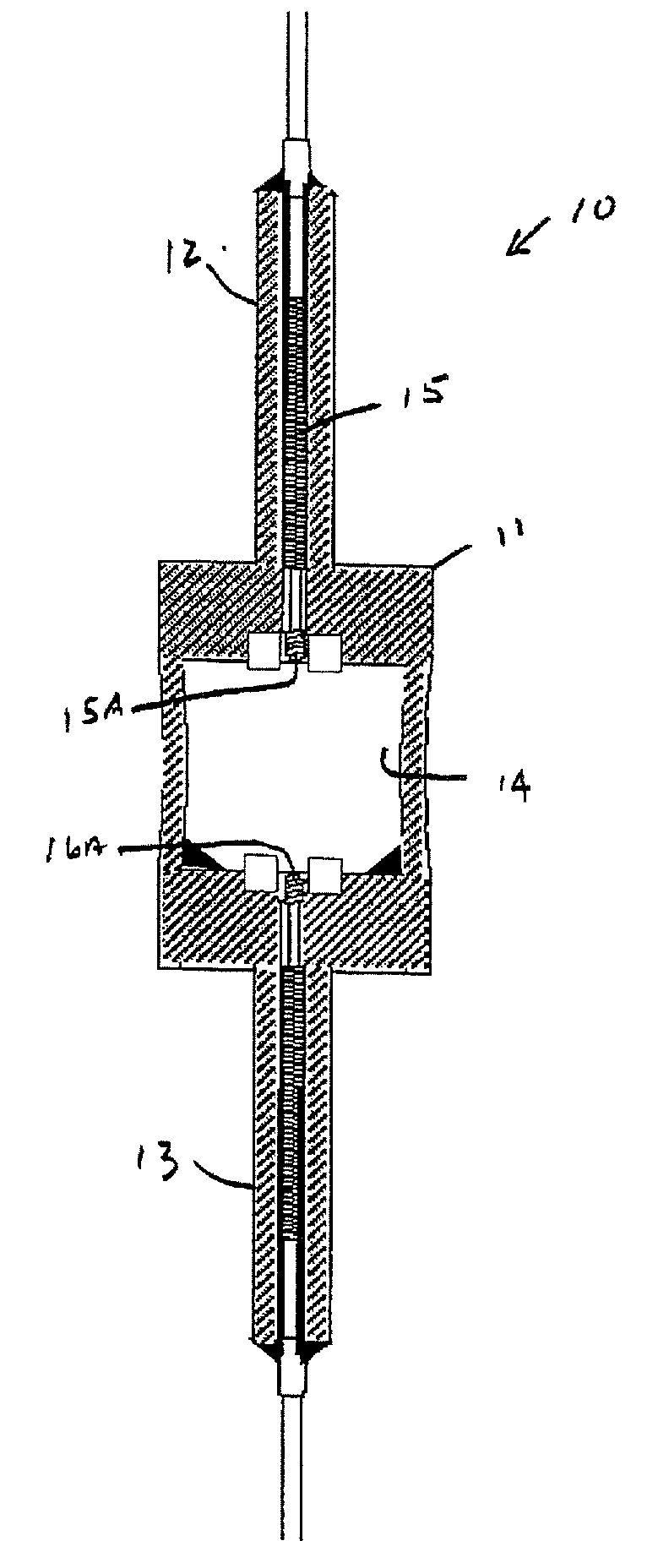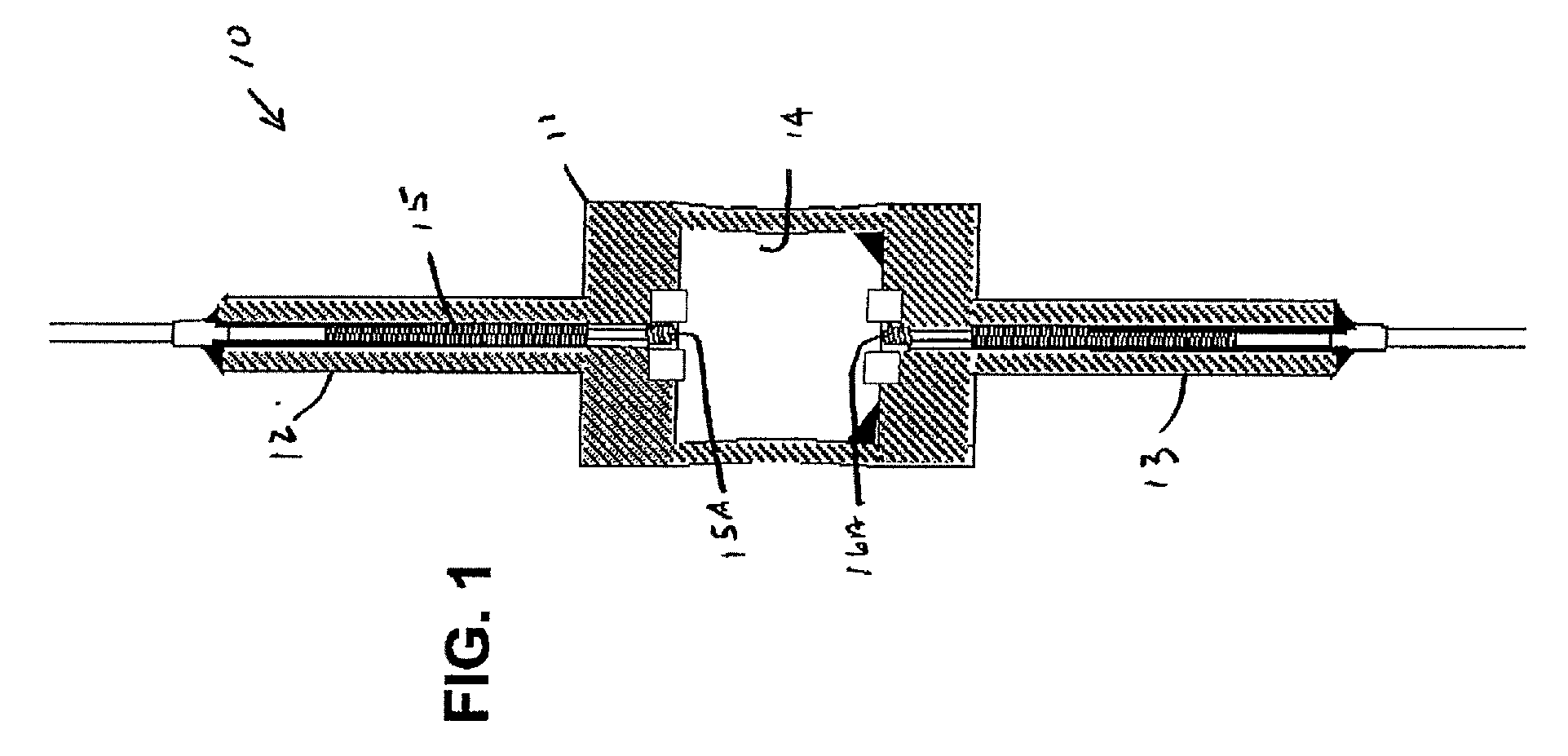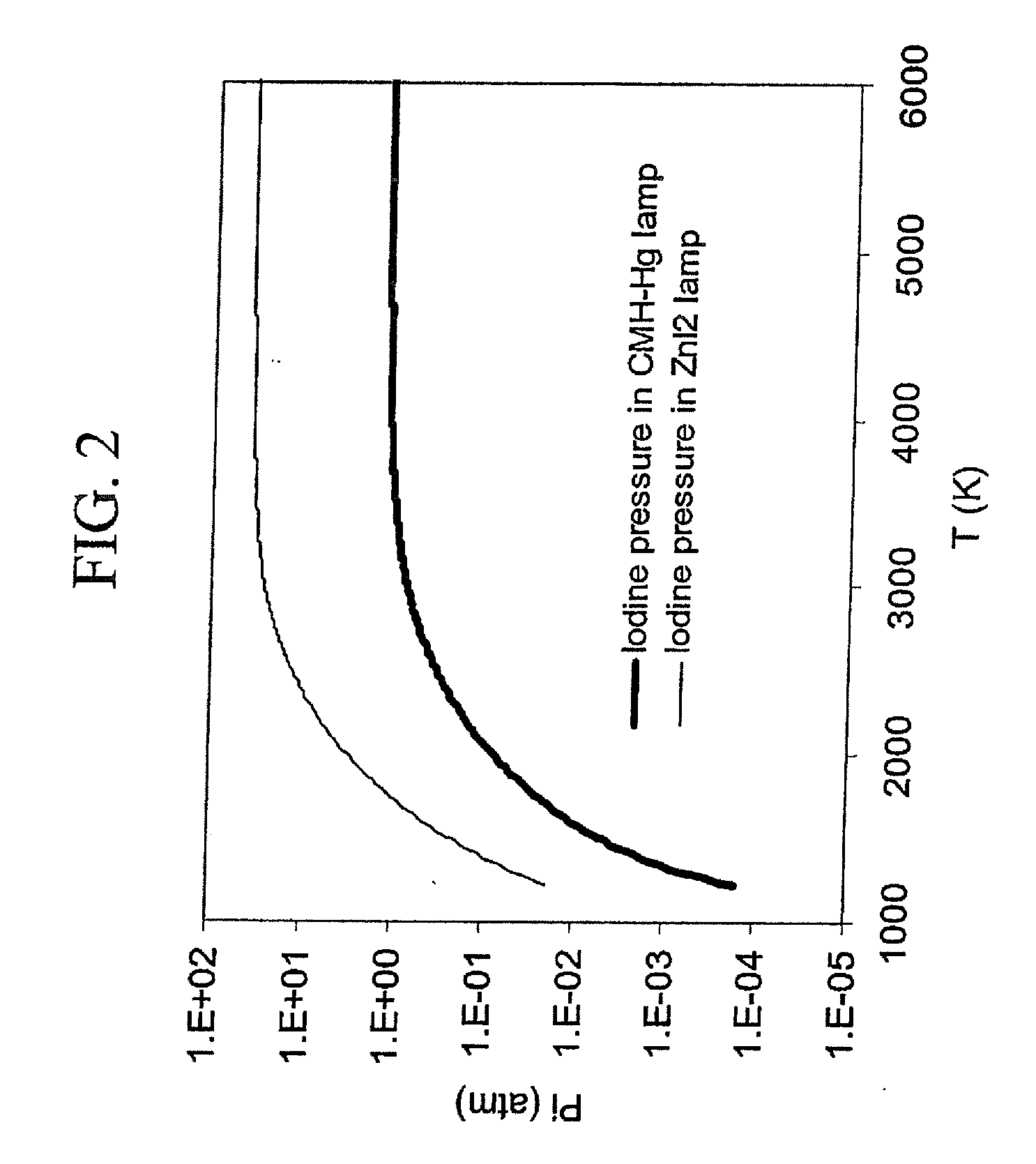Mercury-free metal halide discharge lamp
a metal halide and lamp technology, applied in the direction of gas discharge lamp details, electric discharge tubes, electrical equipment, etc., can solve the problems of mercury being very toxic, affecting the use of metal halide lamps, and raising health and environmental concerns
- Summary
- Abstract
- Description
- Claims
- Application Information
AI Technical Summary
Benefits of technology
Problems solved by technology
Method used
Image
Examples
Embodiment Construction
[0026] An embodiment of the invention for a mercury-free high intensity metal halide discharge lamp contains a discharge medium that comprises a rare gas (e.g., Ar or Xe), and a first metal halide as a light emitting element or additive that emits light within a desired range of the light spectrum and with a desired amounts of lumens. The medium also comprises a second metal halide that replaces mercury to maintain a desired operating voltage of the lamp. The discharge lamp structure comprises typical elements of a discharge lamp as illustrated in FIG. 1 and previously described.
[0027] In an embodiment, the invention also includes a metal that is reactive with a halogen and / or halogen ions that are generated during the operation of the discharge lamp. During the operation of the discharge lamp containing the above referenced discharge medium of rare gas, the first metal halide and second metal halide, the molecules of both metal halides dissociate within the arc region into metal a...
PUM
 Login to View More
Login to View More Abstract
Description
Claims
Application Information
 Login to View More
Login to View More - R&D
- Intellectual Property
- Life Sciences
- Materials
- Tech Scout
- Unparalleled Data Quality
- Higher Quality Content
- 60% Fewer Hallucinations
Browse by: Latest US Patents, China's latest patents, Technical Efficacy Thesaurus, Application Domain, Technology Topic, Popular Technical Reports.
© 2025 PatSnap. All rights reserved.Legal|Privacy policy|Modern Slavery Act Transparency Statement|Sitemap|About US| Contact US: help@patsnap.com



